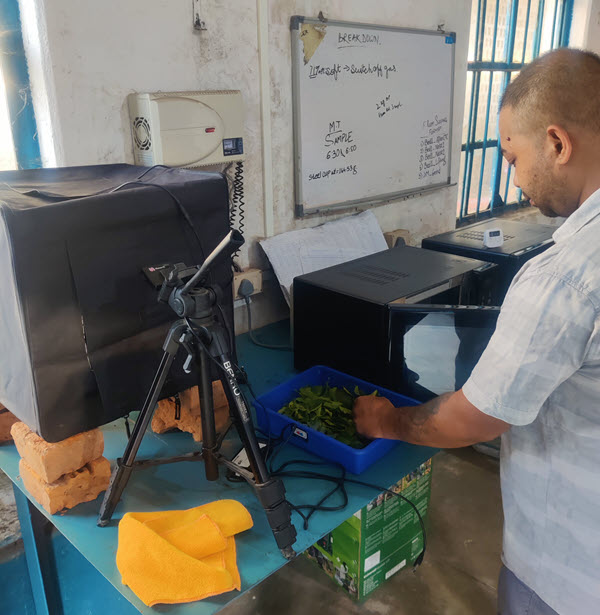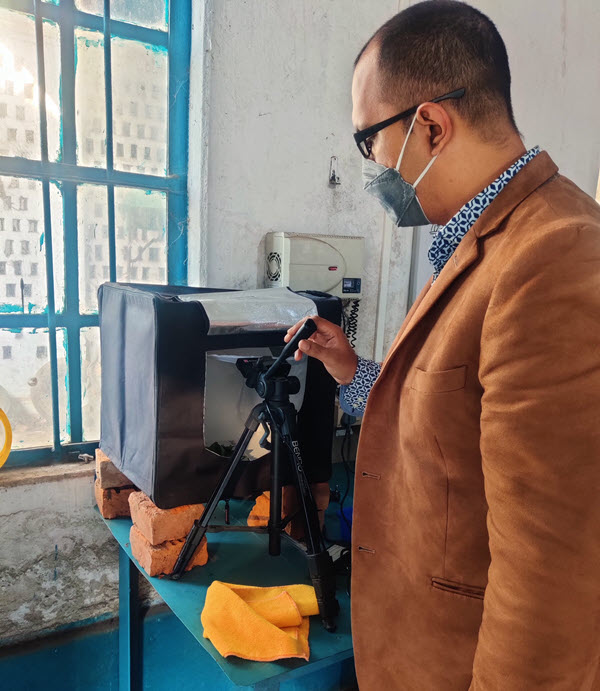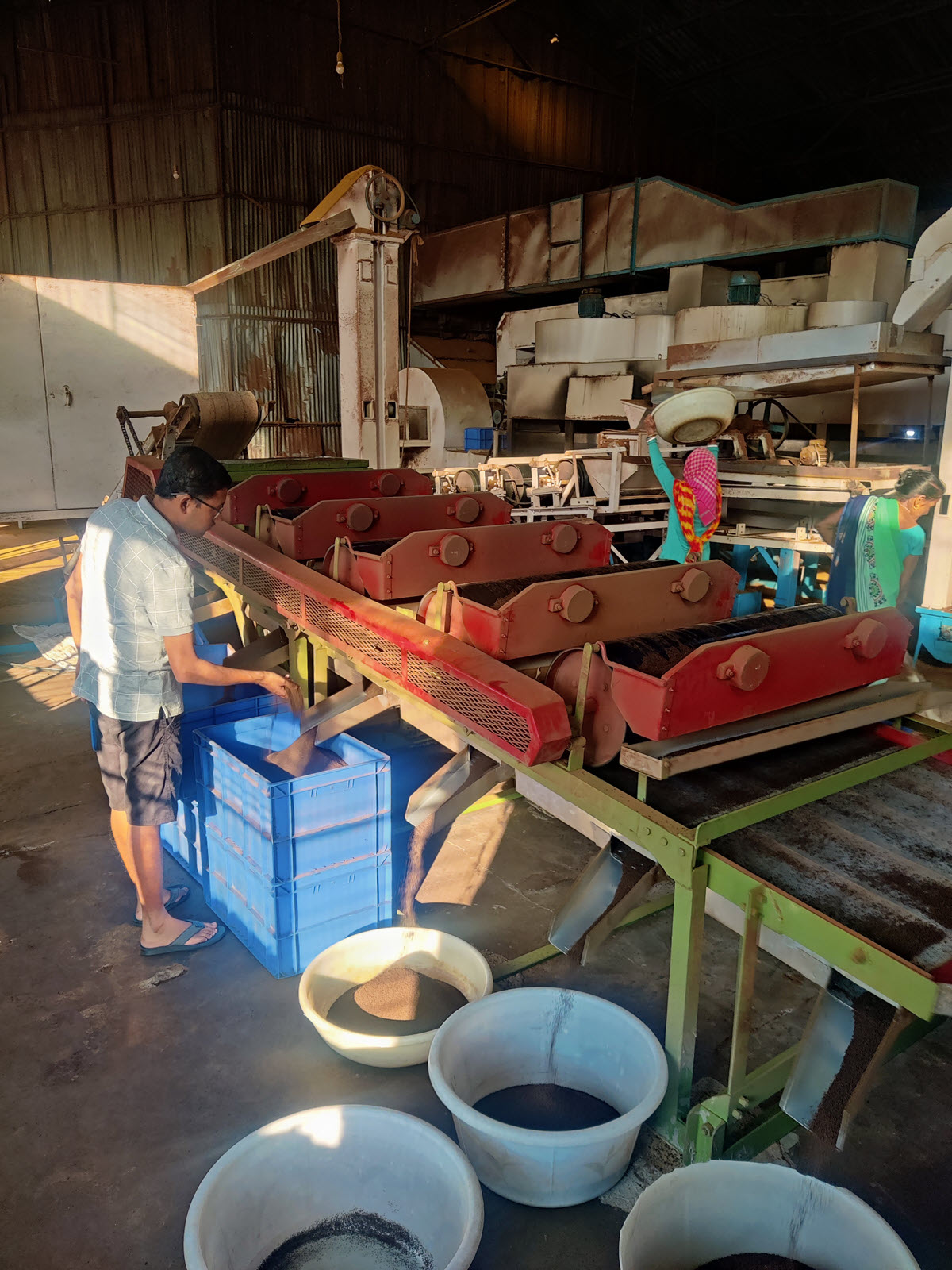There are few entry barriers to tea. It does not demand heavy infrastructure. But the complaint from smallholders selling raw leaf to large-scale tea producers operating multiple factories is that for the past decade, farmgate prices are not commensurate with costs. Now the economics of the tea trade is gradually shifting from oversupply to scarcity. At the same time, some quiet work underway in India is yielding encouraging results that lower the cost of tea production, improve quality, and ease a shortage of labor. The most powerful driver for change is revenue. Prices globally, on average, increased by $0.21 cents per kilo during 2021, according to Trading Economics. Abhijeet Hazarika, IT analyst @TeaSigma and former head of process innovation at Tata Global Beverages, observed that “Tea is not a very high profit yielding commodity and will not be so in the foreseeable future until some tech breakthrough happens.” The frugal innovations described in this series, combined with higher prices may herald that breakthrough.
- Caption: Shekib Ahmed at Koliabur Tea Estate in Assam
Hear the interview (Part 2)

Embracing Simple Technology with Scalable Impact
By Aravinda Anantharaman
Frugal innovations utilize simple technology to address some of the most vexing challenges facing the tea industry. It’s an umbrella term for innovations that do not require much capital, carry a low financial risk and can be done safely with high reliability. Abhijeet Hazarika, former head of process innovation at Tata Global Beverages, describes several innovations that have moved from the drawing board to become successful pilots at partner estates. In Part 1, Aravinda Anantharaman looked at frugal innovation in buying and selling tea. In Part 2, she explores the application of frugal innovations in the tea garden.
Shekib Ahmed of Koliabur Tea Estate in Assam talks about experimenting with frugal innovations in the field, but it’s in the factory, he says, that these simple technologies show the biggest impact.
“With data,” says Ahmed, “I have an objective source of attention to detail. I don’t have to depend on someone who has been working in the industry for 40 years, who uses his expertise and muscle memory to guide us. I have objective data. And that really helps me change the conversation in the factory. I’m not talking of vague concepts. I’m talking about numbers. I’m saying, this is the parameter that we want, and we must keep it within this threshold. It makes it scientific.
“What happens is that even the youngest boy or girl who’s joining as an executive, he or she can pick it up very quickly. She doesn’t have to be there for 20 years. Now, we have a young lady in one of our factories in Dubba. She’s running a 12-hour shift by herself and it’s just data. She has the data. She knows that we must stay within these parameters for the quality to be good.
“She’s in her 30s. Normally, guys running factories at that level, are in their late 50s and 60s, because you need to have that much experience. But if we can objectify data, we can have younger blood come in quickly. They are also not operating blind. I’m not just telling them, make good tea. I’m telling them this machine should be running from this much to this much. The sensor will inform you whether you are in that range. In our shared platforms, we have a cloud-based platform where we share the data, and we keep verifying it. There are many little things in production where we were operating blind and now, we have a certain level of clarity so that really helps us improve.”
Ahmed meters temperatures in the factory. Incidentally, this was developed by a young boy at a cost that Hazarika only will say, “is laughable”. Three machines are ready, and one of them is at Ahmed’s factory. Attention to detail, which was once subjective, has now become scientific and objective, says Ahmed. He likens processing tea to cooking, and how by tweaking the temperatures and the RPM of machines, the quality of tea changes exponentially. These innovations are sensor-based, that are already in use in other industries. Ahmed reminds me that the color sorters in orthodox tea production were derived from rice sorters.

And finally, innovation in the field
During our conversation, Hazarika discusses people, welfare, and productivity. Speaking on low productivity, he says, it’s not because people are shying away from work but because of the nature of the work.
Hazarika says “There are times when I stand in the gardens in August, and it is so hot that I could not stand more than 45 minutes to an hour before I felt unwell. But these people do it day in day out. It’s difficult and I don’t think anybody talks about this. So much hype about the romance of the woman carrying the bags, how many realize what goes on in that case, it’s like a furnace!”
We talk about harvesters. Most of the harvesting machines, he explains, are handheld machines and they tend to be noisy and heavy to carry. Therefore, men are assigned the machines. Not only is it tiring but it’s hard to keep one’s hands steady with them. This means that the quality of the plucking is not very good. Terrain poses another challenge for harvesters even in Assam’s valleys, where it is an uneven terrain. This challenge is amplified in the hills. Hazarika talks about harvesters not as a means to increase quantity but to aid quality.
He is looking at two major deliverables. One, the quality of the finely plucked should be at least 5x better than what is plucked by current machines and at least 2x better than what has been plucked by hand. Two, pest controls. The cost of pest and disease control is significant, especially where there are large areas to monitor, which is the case with estates that span many hectares. Pests can spread within two to three days offering a very small window to arrest their spread. An early warning system, says Shekib, can make an enormous difference. However, this seems to be a mammoth task — perhaps the most challenging space to build innovation — because, for every pest, Hazarika says, a year’s worth of data needs to be collected to feed the algorithms.
Nowhere does the conversation turn to machines replacing people. Instead, the conversation repeatedly brings up utilizing labor effectively to increase output but with better quality.
“I think the tea industry supply chain is completely out of sync with the way modern supply chains work. There is no concept of made-to-order.”
– Abhijeet Hazarika
From ‘make to stock’ to ‘make to order’
Ultimately, it comes down to the perennial problem of oversupply and reduced demand, and the mad scramble for markets. Indian tea producers do not make to order but make to stock, their priority is to sell. And the circle that begins with variability in the quality of tea closes with variability in price realization. Made-to-order brings other advantages, as it is collaborative and brings both technical and technological inputs as part of the process.
“I think the tea industry supply chain is completely out of sync with the way modern supply chains work,” says Hazarika. “There is no concept of made-to-order. They will say forward contracts are made to order. I beg to disagree because, when you say I will take a tea from you, I mean I will take a tea off a particular quality from you. The guy who’s making the tea, in many cases, is not even aware of what you want. So, the buyer has permission to reject it.”
“One of the most important aspects of made-to-order is to leverage the unique aspects of an estate of the factory that has consumer value. Somebody might make tea that makes good color which is preferred in Maharashtra or some may make tea with a sweet after taste which the Gujaratis like. We need to be able to treat every garden as unique and not as a commodity.”
While this is a familiar story, of not treating tea as a commodity, Hazarika offers a roadmap of sorts that is possible with frugal innovation. Once you have quality specifications, a producer can do real-time monitoring during manufacturing. All the resources are focused on producing only what meets the specs. This in turn optimizes the cost of production and increases the likelihood of the customer buying it because it’s been made to their specs.
Which brings the conversation to buyers because the change has to begin with them. If the large tea buyers are procuring 1,000 mn kilos of tea a year, assuming an average estate produces 1 mn kilos of tea, that’s 1,400 estates that can cater to one single buyer. Change can begin with one single buyer.

Saurav Berlia talks about how he is piloting the make-to-order model. He has partnered with a buyer who has agreed to buy his tea at a higher-than-average price. In return, Berlia assures the buyer will receive:
- – quality (achieved by managing the parameters while processing in the factory)
- – consistency (ensured by recording data such as temperature, moisture levels)
- – safety (being done by educating growers on chemical usage and monitoring it)
There may not be certifications here, but data is being recorded digitally and analyzed. For those who have wondered about the alternative to expensive certifications, this may well be it. Because the proof is there for anyone to see.
Ahmed talks about how the conversations are changing, becoming more specific. It’s helping him build a young team who are learning, not averse to technology, and who are razor-focused on quality. Innovation, he says, is no longer just for multinationals but for everyone.
“The only way I can do something better than the much larger tea garden groups is if I can execute innovation quickly and if I can execute quality improvement better and in the most cost way,” says Ahmed. And that can only happen with teamwork.
The larger outcome is more significant. Frugal innovation will change the way the industry is run. It will no longer be about waiting for an executive to invest 30-40 years in the factory to be relied upon to run it. Frugal innovation can bring effective processes into play in a way that someone young can be trained early on. This is important in a state like Assam where migration is extremely high and the intellectually able who leave don’t return.
The work on frugal innovation is being made possible by harnessing vast industry experience, a wide network, and an active collaboration with academia. Support and partnerships have come from major tea buyers. The possibilities where tech can play are vast and are seen by both Ahmed and Berlia as the way forward.
“Come in with an open mind,” advises Ahmed. It requires a willingness to try piloting the various options. And because these innovations are frugal by design, it’s affordable even for small growers and small gardens. Berlia confesses that he didn’t buy into it readily but the potential to earn a better price for the tea was a strong pull. Within a month, he says, he could tell it was working and he’s since been advocating it.
For an industry that’s been grappling with multiple challenges, frugal innovation is a low-risk and impactful option, spearheaded by an industry veteran with an eye for innovation. For every successful experiment, there are many that fail, but these are essential to the process that begins with the question, “What if…?”
Those interested in pilot projects can contact [email protected]




- Related
- The Cost of Producing Specialty Tea
Mechanical Tea Harvesting - Reviving Darjeeling
- India’s Earth-Friendly Tea Factory
Hear the full interview (Parts 1 & 2)
Link to share this post with your colleagues
Signup and receive Tea Biz weekly in your inbox.

Never miss an episode
Subscribe wherever you enjoy podcasts:



2 responses to “Frugal Innovation”
In tea crafting as in all the arts success is to be measured by a gradual transition from complex and intricate procedures to those of a simpler kind.
Keep going
In tea crafting , as in all the arts, success is to be measured by a gradual transition from complex and intricate procedures to those of a simpler kind.
Keep at it.